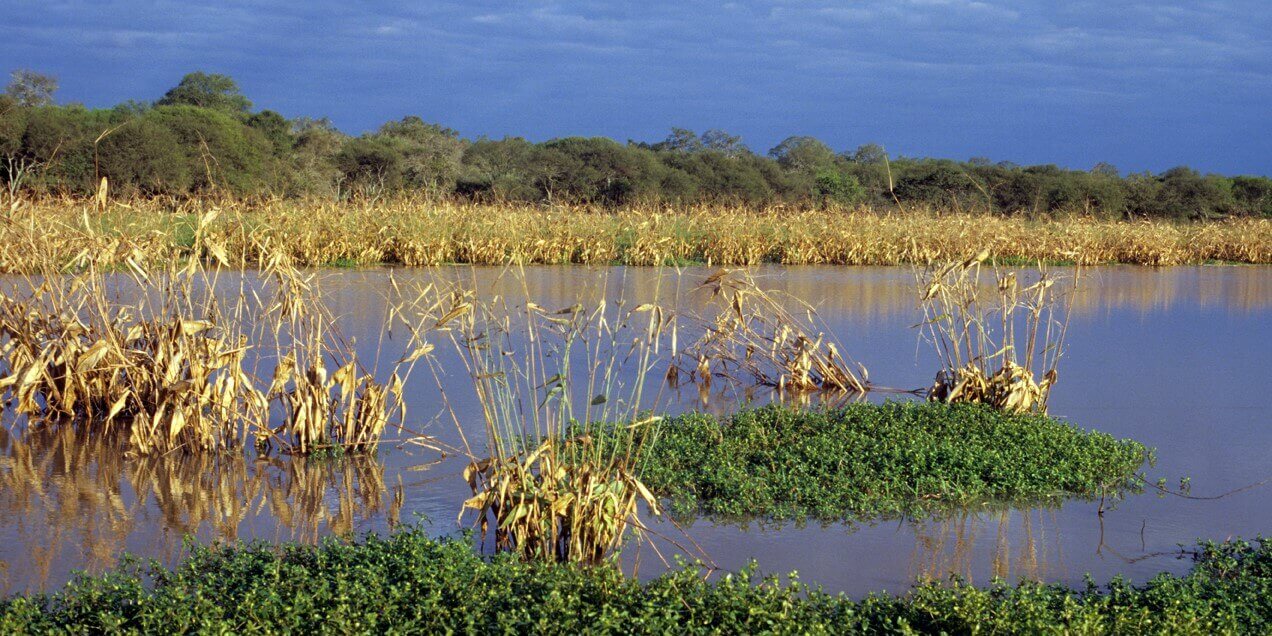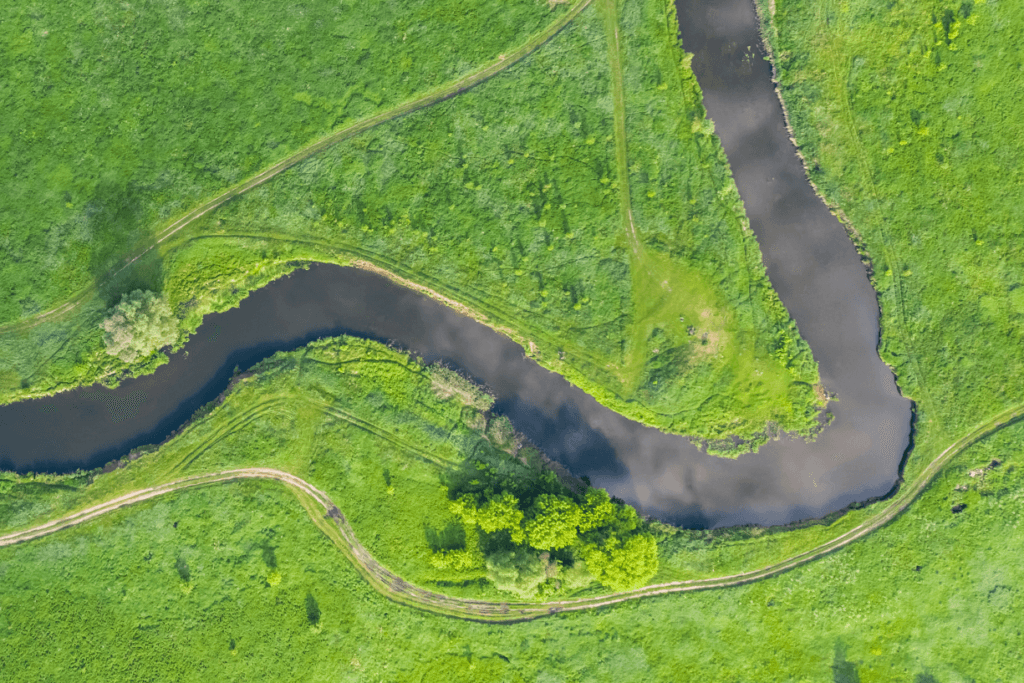
After the announcement of the National Champions by the Frontiers Planet Prize on Earth Day, we delve into the groundbreaking research of a sustainability scientist from Latin America. Pedro Jaureguiberry, the National Nominee of Argentina for this year’s Frontiers Planet Prize, recently participated in the ISC Global Knowledge Dialogue for Latin America and the Caribbean, held between April 9th and 11th in Santiago de Chile. There, we had the opportunity to learn more about his research.

Dr Pedro Jaureguiberry
“In the context of planetary boundaries science, understanding the drivers of biodiversity loss is crucial for staying within a safe operating space. Biodiversity loss not only undermines ecosystem resilience and stability but also threatens the provision of ecosystem services vital for human well-being, such as clean air, water, and food security.“
How did you choose this research? How did your passion for this research start and your career in science?
From a very young age, I had an interest in natural sciences and the relationship between humans and nature. Since my early years of college, I was drawn to microbiology, especially ecology at the level of communities and ecosystems, and how these are shaped by different disturbances. While my primary research area is fire ecology of dominant species in plant communities with different histories of anthropogenic use in the Chaco region of central Argentina, throughout my career I have also been actively involved in several large-scale interdisciplinary projects. These projects have allowed me to collaborate with colleagues from different countries and backgrounds, providing me with a broader perspective on generating the knowledge necessary to tackle present and future global environmental challenges.
It was during my involvement in the IPBES Global Assessment Report that, alongside a brilliant team of colleagues, we conducted an unprecedented global synthesis on the hierarchy of direct drivers of biodiversity loss, advancing previous knowledge in terms of scope and rigor. The culmination of our work was the publication of a high-impact paper, which we are presenting at the Frontiers Planet Prize 2024: The direct drivers of recent global anthropogenic biodiversity loss.
Can you tell us more about which planetary boundaries your research addresses and the research question you wish to answer?
In the context of planetary boundaries science, understanding the drivers of biodiversity loss is crucial for staying within a safe operating space. Biodiversity loss not only undermines ecosystem resilience and stability but also threatens the provision of ecosystem services vital for human well-being, such as clean air, water, and food security. Identifying which drivers are causing more damage is fundamental for designing effective policies and setting actionable targets to address pressing sustainability challenges. Given the scope of our study, we can say it relates to all proposed planetary boundaries. On the one hand, biodiversity loss ꟷthe response variable of our research, which has its specific planetary boundary; and on the other hand, the other planetary boundaries, most of which are directly or indirectly linked to the direct drivers assessed in our study. For example, climate change and land/sea use change, two major drivers of change that encompass multiple underlying human activities, are proposed as planetary boundaries themselves. Other planetary boundaries, such as ocean acidification, atmospheric aerosol loading, ozone layer depletion, and novel entities are directly linked to pollution; and the overuse of freshwater is associated with exploitation of natural resources. In turn, all these aspects can also interact to affect the remaining planetary boundary, which is the biogeochemical cycles.
What are the key findings of your research?
Whereas previous knowledge has been limited in scope and rigor, our global review, the largest of its kind so far, statistically synthesizes empirical comparisons of the impacts of different direct drivers in the past +50 years. We show that, worldwide, land/sea use change has been the dominant direct driver of recent biodiversity loss. Direct exploitation of natural resources (fishing, hunting, selective logging) ranks second and pollution third. Since the 1970s, climate change and invasive alien species have been significantly less important than the top two drivers. The oceans, where direct exploitation and climate change dominate, have a different driver hierarchy from land and fresh water. Driver hierarchy also varies among types of biodiversity indicators. For example, climate change is a more important driver of community composition change than changes in species populations.
How does your research connect to you and your community?
Our study sheds light on pressing environmental concerns that affect not only scientific communities, but also political and societal realms. Apart from the significant academic impact our research has achieved since its publication, it has directly contributed to intergovernmental policy, heavily inspiring the identification and ranking of direct drivers in the new post-2020 Kunming-Montreal Global Biodiversity Framework (GBF) of the Convention on Biological Diversity (CBD), contributing to the implementation of what is hopefully the most important intergovernmental biodiversity policy instrument for the next decade, along with its derived international and national policies. Member countries of the CBD have committed to fulfilling these targets as part of the 2030-2050 global sustainability agenda. Our research advocates for collaborative initiatives involving not only scientists and policymakers, but also practitioners and local communities. Such initiatives can promote knowledge exchange and capacity building, fostering greater awareness and action towards achieving the goals of planetary boundaries science.
What are the necessary next steps of your research agenda, to enhance the breakthrough potential within planetary boundary science?
The knowledge gaps identified in our study can serve as triggers for future studies. Valuable next steps include: improved data on drivers, particularly regarding their effect sizes across different biodiversity indicators and changes in drivers’ dominance over time; new approaches to modeling their interactions; new scenario frameworks that better reflect the complex interplay between people and nature, including potential mismatch between management policies and biological and ecological characteristics of the ecosystems involved. A thorough approach to these topics will produce an ever-clearer picture of the problem, but fundamentally, it will be a key contribution to working towards options for a sustainable future for the planet.
How can your research be shaped and amplified to allow it to influence policy, society, and economy, therefore maximizing its transformative insights?
Our methodological approach can be applied in any spatial, temporal, or theme-specific context to understand the impact of direct drivers, meeting the needs of various stakeholders. Thus, it provides an essential science-based foundation for more effective, concrete, and location- and sector-specific mitigation actions.
Current trends in biodiversity research emphasize the need for interdisciplinary approaches integrating ecological, social, and economic perspectives. Leveraging technological advancements, such as remote sensing and big data analytics, can enhance our understanding of biodiversity patterns and drivers across different spatial and temporal scales.
Read Dr Pedro Jaureguiberry’s research submitted to the Frontiers Planet Prize: The direct drivers of recent global anthropogenic biodiversity loss.

Disclaimer
The information, opinions and recommendations presented in this article are those of the individual contributor/s, and do not necessarily reflect the values and beliefs of the International Science Council.
Picture by Christian Ostrosky on Flickr.